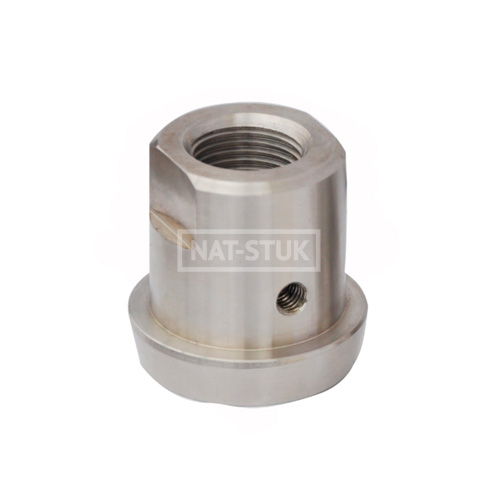Sanitary Pressure Gauge
Sanitary Pressure Gauge is designed to isolate the sensing element of pressure gauges from process fluids that they may be corrosive, viscous, sedimentous and / or with a high temperature. They are used for food and beverage production, dairy products, breweries, laboratories, soft drink production, etc.
Specifications
Dial sizes: 2.5′, 4″, 6″ (63, 100 & 150 mm)
Case: 304 Stainless Steel case.
Wetted parts: 316 Stainless Steel
Pressure Range: Vac to 600 psi/Bar
Diaphragm seal type: Tri-clamp, SMS, and DIN
Description
Sanitary Pressure Gauge is designed to isolate the sensing element of pressure gauges from process fluids that they may be corrosive, viscous, sedimentous and / or with a high temperature. They are used for food and beverage production, dairy products, breweries, laboratories, soft drink production, etc.
Specifications
Sizes: 2.5′, 4″, 6″ (63, 100 & 150 mm)
Accuracy gauge+seal: : 1.6% of full scale
Case and ring: 304 Stainless Steel matte finished
Lens: Polycarbonate
Wetted parts: 316 Stainless Steel
Operating Temperature: Ambient: -20 to 65°C (-4°F to 149°F)
Process fluid: max 65°C (149°F)
Dial: Aluminum with black & red markings
Pointer: Black aluminum with micrometer adjustable
Connection: Tri-clamp, SMS, and DIN
Ranges: 0 to 6,000 psi/Bar
Protection degree: IP65
Diaphragm seal type: Tri-clamp, SMS, and DIN
Protection
– If pressure gauges are to be used for steam service, a siphon tube filled with water must be installed between gauge and line to prevent live steam from entering the Bourdon tube.
– A gauge cock should be installed in the pressure line. This might be the standard shut-off valve or a needle valve for throttling pressure pulses.
– If severe pulsation exists, the gauge should be protected by adding a throttling orifice
screw in the gauge socket or by addition of a pulsation damper, such as a snubber.
– A diaphragm seal should be used in applications where process media should not come in contact with gauge.
We invite you to check out our post: When should you use liquid-filled pressure gauges?














